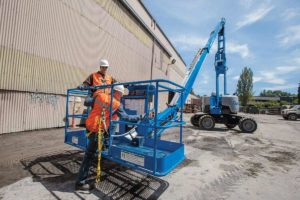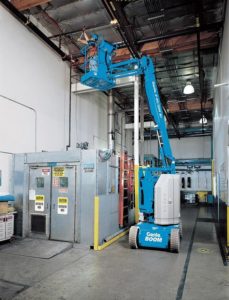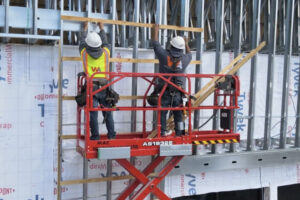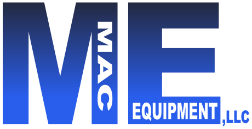Aerial lift equipment is essential for many industrial and commercial tasks. It is important to understand the potential risks associated with the operation of aerial lift equipment and the safety precautions that must be taken to ensure a safe working environment. This article will discuss 10 essential safety tips for operating aerial lift equipment.
Aerial Lift Safety Tips

- Inspect the Lift Before Use
It is essential to make sure that the lift is in good working condition prior to using it. Make sure all components of the lift are functioning properly, including safety features such as brakes, outriggers, and safety harnesses. Inspect the platform for any signs of damage and check for any loose parts. - Ensure Everyone Involved is Certified and Knowledgeable
It is important to ensure that everyone involved in the operation of the lift is certified and knowledgeable on how to properly use the lift. Everyone operating the lift should be knowledgeable about safety protocols and have a keen understanding of the equipment. - Be Aware of What’s Above You
When operating an aerial lift, it is essential to be aware of what is above you and anything that might enter the work envelope. This includes any overhead power lines, trees, or buildings that could be in danger of being hit by the lift. Additionally, it is important to be aware of the lift’s range of motion and the potential for it to contact any overhead objects. Make sure to inspect the lift prior to use to ensure that it is in good working condition and does not have any obstructions or hazards above it. By being aware of what is above you, you can ensure that you are operating the lift safely and avoiding any potential hazards. - Be Aware of What’s Around You
When operating aerial lift equipment, it is essential to be aware of what is around you. Look for obstructions that the lift may come in contact with, such as power lines, buildings, or other equipment. Also, make sure that no personnel or equipment is in the vicinity of the lift while it is operational. This will ensure that they are not in danger of being hit by the lift. Additionally, make sure to set up work zone warnings and signs, along with cones to alert personnel of the hazard. By being aware of your surroundings, you can ensure a safe working environment for everyone involved.  Keep Away From the Lifting Mechanism
Keep Away From the Lifting Mechanism
When operating aerial lift equipment, it is essential to keep other equipment and personnel away from the lifting mechanism. This will help to reduce the risk of equipment or personnel being hit by the lift or the lift becoming unstable due to an unexpected weight shift. To ensure the safety of those working near or around the lift, it is important to establish a safe perimeter around the lift and establish a safety protocol that everyone must follow. This includes prohibiting any personnel or equipment from entering the area around the lift while it is operational. To further protect personnel in the area, it is important to post signs and cones that alert people of the hazardous area. By following these safety protocols, you can help to ensure the safety of everyone in the vicinity of the lift.- Wear Harnesses / Restraining Belts
When working at heights, it is essential that personnel on the lift wear appropriate safety harnesses. This will ensure that they are secured to the lift and protected from falls. - Set Up Proper Work Zone Warnings and Signs
When operating the lift, it is important to set up work zone warnings and signs, along with cones, to alert people in the vicinity of the lift. This will help to keep personnel and equipment away from the lift and ensure a safe working environment. - Ensure the Lift Doesn’t Extend Between Obstructions
When extending the lift, make sure that it does not come in between any obstructions. This ensures that the lift is not in danger of being damaged or hitting anything. - Ensure the Lift is on Even Ground
It is important to make sure that the lift is on even ground before operating it, as uneven ground can cause the lift to become unsteady and potentially cause an accident. Make sure the lift is on a firm, level surface, suitable to support the weight of the unit during operation. - Check the Weather
When operating the lift, make sure to check the current wind speed. High winds can cause the lift to become unsteady and potentially cause an accident.
What Not to Do

When operating aerial lift equipment, it is important to be aware of what not to do. Exceeding the load capacity of the lift can be dangerous and can cause the lift to become unsteady and potentially cause an accident. Do not use the lift as a crane, as this can also be hazardous. Do not lean, sit, or climb on the railing, as this can put the operator in danger of falling or the lift becoming unstable. Lastly, make sure that no other personnel or equipment is in the vicinity of the lift while it is operational. By following these safety protocols, you can ensure a safe working environment for everyone involved in the operation of the lift.
Closing
Operating aerial lift equipment can be a dangerous task if proper safety protocols are not followed. Make sure to inspect the equipment and ensure everyone involved in the operation of the lift is certified and knowledgeable on safety protocols. Be aware of what’s above and around you, and set up work zone warnings and signs, along with cones. When extending the lift, make sure it doesn’t come in between any obstructions and ensure the lift is on even ground. Lastly, check that the wind isn’t too harsh and make sure not to exceed the load capacity or length of the lift. By following these safety tips, you can ensure a safe working environment for everyone involved. For more information about aerial lift equipment, contact MAC Equipment.
